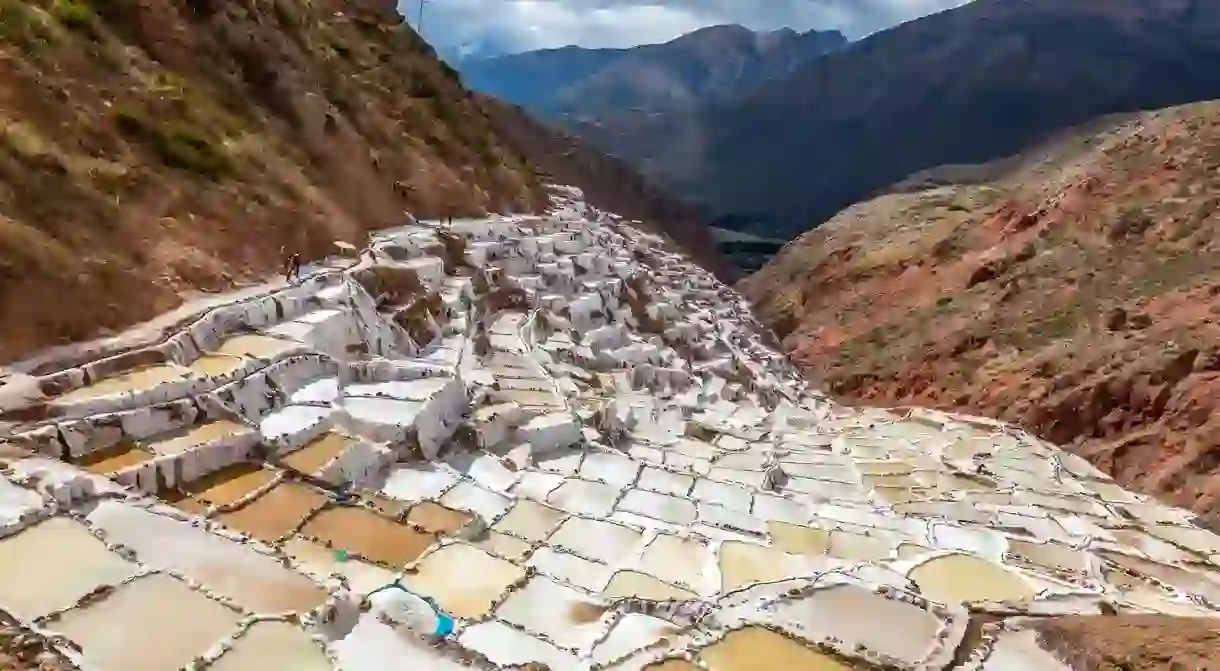The Essential Guide to the Incredible Salt Ponds of Maras, Peru

Maras is a town located in the Sacred Valley of the Incas, where an ancient custom is still practiced, the use of pre-Inca salt ponds. These amazing constructions continue to provide the country — and beyond — with its pink salt which has been recommended by experts as a healthy option to flavor meals due to its curative properties. Aside from its nutritional value, the salt ponds of Maras are often visited for their spectacular scenery. Here’s everything you need to know about this historic wonder tucked in the Andes.

The salt ponds were built in AD200-AD900 by the Chanapata culture, pre-dating the Incas. The terraces are known in Quechua as Kachi Raqay and they’re situated at at an elevation of 3,000 meters above sea level. There’s about 5,000 ponds, each belonging to a local family (the size of the pond relative to the family size), while some remain unused. It was used to supply the entire Inca Empire as well as the Viceroyalty of Peru. But how did it all start? Usually, salt ponds form near the ocean, meaning Maras was once covered by one. Each pond is usually 5 meter square and have a 30 cm depth. An ancient spring water canal called Qoripujio feeds the ponds through a network of slimmer channels that cross the complex, so when keepers want to fill theirs, all they must do is open a notch to allow the salty water to come in. Once the pond is full, keepers leave it to dry in the arid Andean weather until the spring water evaporates completely. After its all dried up, the scraping of the pink salt crust begins.

To visit the salt ponds of Maras, you must pay a 10 soles fee to the local community. The town of Maras itself, located 4 km from the salt ponds, is also worthy of a visit. This town was founded in 1556 by Spaniards who also made great use of the salt ponds. You can visit a baroque church from the 17th century and houses that have preserved the rock portals and lintels placed in colonial times.
To access Maras and its salt ponds, you can take a full day tour to the Sacred Valley, which often includes a visit to Moray, an astonishing Inca agricultural laboratory, Ollantaytambo, a bastion where a bloody battle against the Spaniards was fought, and Chinchero, a town of expert weavers. You can book your tour to the Sacred Valley in agencies located near downtown Cusco or through your hotel or hostel. The cheapest tours cost around 60 to 70 soles a person and they include a guide and transport. Are you an experienced cyclist? You can ride the Sacred Valley in 5 hours with special tours that include a bike, professional guidance and lunch.

Health benefits
Many experts recommend the pink salt of Maras for people who suffer from hypertension because it has low levels of sodium chloride. Maras salt also contains calcium, iron, zinc and magnesium, making it a perfect medicinal option for skin conditions and to treat swelling. It’s important you flavor your meals with Maras salt after you’re done the cooking, since it loses its medicinal properties in temperatures higher than 40 degrees Celsius.
Harvested salt can be purchase on-site very cheaply, once it’s packed and sold in supermarkets, prices tend to triple.
The salt ponds of Maras are becoming a popular tourist attraction in Cusco for the astonishing scenery and historic value. By visiting Maras, you are also contributing to the community of harvesters who will gratefully show you the traditions they’ve inherited from their ancestors.













